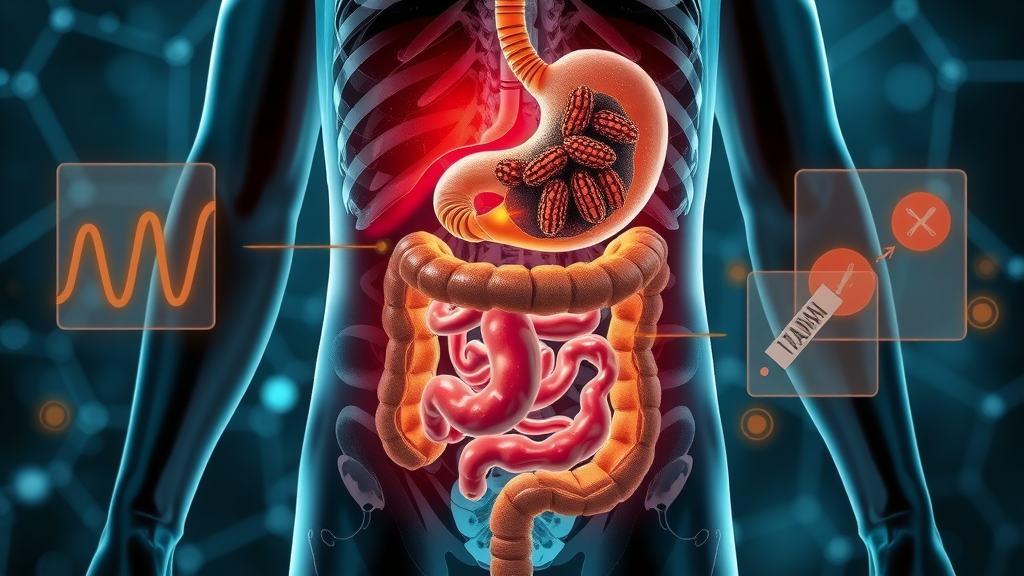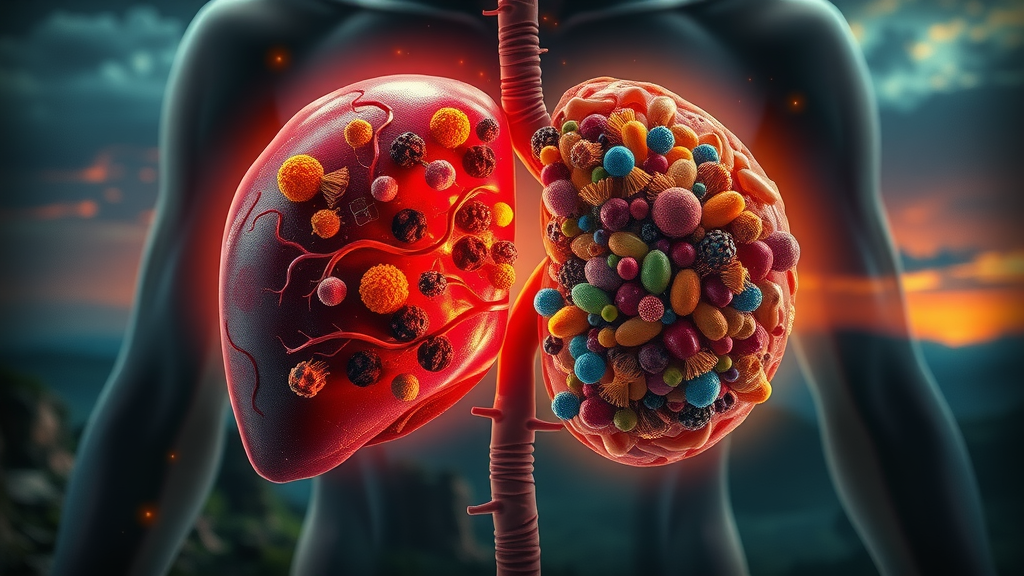Many have faced fatigue or health issues that seemed unexplained—only to discover alcohol was derailing their vitamin absorption. Understanding this hidden impact can transform your wellness journey, helping you reclaim energy and vitality through informed choices about alcohol and nutrition.

How Does Alcohol Consumption Interfere with Vitamins? Understanding the Basics
"Heavy alcohol use causes inflammation of the stomach lining and digestive tract, which reduces the body's ability to absorb vitamins." - Alcohol and Drug Foundation
When exploring the question, does alcohol consumption interfere with vitamins?, it’s important to recognize that alcohol’s impact on nutrition goes much deeper than just empty calories and dehydration. Scientific studies consistently show that both moderate and chronic alcohol use can disrupt your body’s ability to absorb essential nutrients—in particular, vitamins and minerals critical for energy, immunity, and prevention of disease. The issue mainly starts in the digestive tract, where alcohol can damage the lining of the stomach and small intestine, reducing the body’s ability to extract nutrients from food.
These changes may seem minor after just one drink, but consistent alcohol consumption—whether in regular social gatherings or as a daily habit—can lead to significant nutrient deficiencies. This is especially true for individuals who already have poor eating habits or rely on alcohol as a major source of calories. Without proper absorption, even the healthiest diet or most expensive dietary supplement can fail to deliver the expected benefits, making it vital to understand how alcohol affects nutrient absorption and overall wellness.
What You'll Learn from This Guide on Alcohol and Vitamin Interaction
Comprehensive insights into how alcohol consumption interferes with vitamins
Mechanisms of nutrient absorption and nutrient deficiencies due to alcohol
Effects on water-soluble and fat-soluble vitamins
How to protect your health with better choices
Alcohol Affect on Nutrient Absorption: The Science Explained
How Does Alcohol Affect the Absorption of Key Vitamins?

The science behind how alcohol affects vitamin and nutrient absorption centers on alcohol’s complex relationship with the digestive system, highlighting how alcohol affects the gut’s ability to process essential nutrients. Once you consume alcohol, it moves rapidly from your stomach to your bloodstream, but it also directly irritates and inflames the lining of your stomach and small intestine, impairing nutrient absorption and disrupting amino acid and fatty acid metabolism. This inflammation reduces the ability of the gut to absorb and transfer vitamins like Vitamin B1, B12, and C from your food into your bloodstream—meaning you get fewer vital nutrients no matter how healthy your diet appears.
In regular drinkers or those with chronic alcohol exposure, the effect is magnified over time, compounding the body’s nutrient losses. Since vital vitamins are not just absorbed but also activated or stored by organs such as the liver, long-term alcohol intake can also cause alcoholic liver disease, further disrupting the metabolism of nutrients. This disruption is important to consider because deficiencies may manifest as symptoms like persistent fatigue, muscle weakness, or cognitive changes—often going unnoticed until serious health issues arise.
It's worth noting that certain vitamin deficiencies, such as a lack of vitamin C, can be particularly pronounced in those who consume alcohol regularly. If you're curious about the subtle signs and broader health impacts of missing key nutrients like vitamin C, explore this guide on vitamin C deficiency symptoms and risk factors for a deeper understanding.
The Role of the Digestive System in Nutrient Absorption and Alcohol Consumption
Your digestive system is designed for optimal extraction of nutrients from the foods you eat. After food breaks down in the stomach, nutrients—including soluble vitamins, minerals, amino acids, and fatty acids—move into the small intestine where absorption mostly takes place. Alcohol disrupts this process in two main ways: physical damage to the gut lining and inhibition of digestive enzymes needed for breaking down food and facilitating nutrient absorption, including amino acid and fatty acid uptake.
When you regularly consume alcohol, chronic inflammation can become irreversible—damaging the villi (tiny fingers in the small intestine that grab nutrients), which means even healthy meals yield less nutrition.
For those who supplement with dietary supplements or rely on foods thought to be a good source of vitamins and minerals, alcohol consumption’s disruption of both nutrient absorption and utilization can have serious long-term consequences. The body becomes less adept at storing fat-soluble vitamins and may waste water-soluble ones more quickly in urine, adding to overall nutrient deficiencies. The connection is clear: optimizing both dietary habits and alcohol consumption is necessary to maintain robust health.
Alcohol Affects on Water-Soluble and Fat-Soluble Vitamins
How Do Soluble Vitamins React to Alcohol Consumption?
Vitamins are classified based on their solubility: water-soluble (like all B vitamins and Vitamin C) and fat-soluble (Vitamins A, D, E, K). Does alcohol consumption interfere with vitamins? Absolutely—and the mechanism depends on solubility. Water-soluble vitamins dissolve directly in water and are easily lost through frequent urination, a side-effect accentuated by alcohol’s diuretic properties. Fat-soluble vitamins require dietary fat and the help of the liver and intestines for proper absorption and storage—processes easily disrupted by both acute and chronic alcohol intake.
When alcohol affects these two families of vitamins, the risk of deficiency rises quickly—especially since water-soluble vitamins can’t be stored in the body and must be regularly replenished. Fat-soluble vitamin absorption, meanwhile, is closely linked to liver and bile production. Damage to either system from continued or binge drinking directly translates to long-term impacts on overall health, immunity, and even heart disease risk.
Alcohol Affect on Water-Soluble Vitamins (Vitamin B Complex, Vitamin C)
Vitamin B1 (Thiamine)
Vitamin B12
Folate
Vitamin C
Alcohol affects the body by rapidly depleting water-soluble vitamins, including key nutrients essential for energy and immune function. Of special concern is Vitamin B1 (Thiamine), which is essential for nerve function and deriving a source of energy from food. Chronic alcohol use is actually the number one cause of preventable thiamine deficiency globally. Individuals with high or regular alcohol consumption rarely consume enough thiamine in their diets and often suffer from poor absorption, leading to serious neurological symptoms and in severe cases, conditions such as Wernicke-Korsakoff syndrome.
Similar concerns apply to Vitamin B12, which is crucial for mental clarity and red blood cell production. Alcohol damages the stomach lining, where intrinsic factor—needed for B12 absorption—is produced, resulting in a common trend of anemia and cognitive impairment in regular drinkers. Folate (Vitamin B9) works alongside B12 in crucial cellular processes and DNA synthesis; deficiencies here are widespread among those with unhealthy drinking patterns. Vitamin C is another important water-soluble vitamin severely affected by alcohol, with deficiencies leading to poor healing, increased infection risk, and compromised immune health.
Alcohol Affect on Fat-Soluble Vitamins (A, D, E, K) and Dietary Fat
Vitamin A
Vitamin D
Vitamin E
Vitamin K

Fat-soluble vitamins are stored primarily in the liver and require adequate amounts of dietary fat for absorption. Because alcoholic liver disease is a well-documented consequence of chronic and excessive drinking, the ability to process, store, and mobilize these vitamins is frequently impaired in those who frequently consume alcohol. Vitamin A is crucial for eye and skin health, Vitamin D for immunity and bone strength, Vitamin E as a cell protector, and Vitamin K for blood clotting. All are impacted as the liver’s storage and metabolic capacity diminishes through repeated exposure to alcohol.
This is a hidden danger because even diets rich in these nutrients or reliance on dietary supplements cannot overcome significant hepatic damage. Furthermore, alcohol disrupts dietary fat metabolism, making it even harder to process these essential vitamins. Over time, this leads to fragile bones, increased bruising or bleeding, poor skin, and higher infection risk—symptoms often mistaken for other medical conditions until the role of alcohol consumption is carefully considered.
Alcohol Consumption, Amino Acid, Fatty Acid, and Dietary Fat Metabolism
Does Alcohol Interfere with Amino Acid and Fatty Acid Absorption?
It’s not only vitamins that are affected—alcohol also disrupts the absorption and metabolism of amino acids (building blocks of protein) and fatty acids (from dietary fat). Chronic or heavy alcohol consumption can harm the structure of the small intestine, where amino acids and fatty acids are absorbed, leading to impaired nutrient absorption and muscle weakness. This damage can lead to reduced muscle synthesis, compromised tissue repair, and overall weakness since these nutrients are essential for maintaining lean body mass and vital bodily functions.
Moreover, as fatty acids play a significant role in cell membrane composition and hormone production, interference here can have a systemic effect on brain health, mood, and energy levels. Individuals with high alcohol intake may notice slower recovery after exercise, frequent fatigue, poor skin and hair quality, and difficulties maintaining a healthy weight—all due to disrupted amino acid and fatty acid metabolism.
The Impact of Alcohol Consumption on Dietary Fat Metabolism

Alcohol disrupts dietary fat breakdown and storage by directly impacting the liver’s function, a process central to the body’s ability to utilize dietary fat not just for energy but also for the absorption of fat-soluble vitamins. Over time, sustained alcohol consumption leads to the buildup of fat in the liver—a hallmark of alcoholic liver disease. This hinders the body’s metabolic flexibility, often resulting in increased body fat, decreased muscle mass, and symptoms of liver damage such as jaundice, swelling, and chronic fatigue.
The effect on liver damage and overall liver health cannot be overstated, especially as the liver is involved in the conversion of many vital nutrients into their active forms. Once liver function is compromised, even small quantities of alcoholic beverage can further degrade fat and vitamin metabolism, worsening lifelong health risks.
Chronic Alcohol Consumption and Long Term Nutritional Deficiency
How Chronic Alcohol Use Leads to Major Vitamin and Nutrient Deficiency
Frequent or heavy alcohol consumption over months or years is a leading, preventable driver of severe nutrient deficiencies worldwide. Chronic alcohol use depletes the body’s reserves of critical soluble vitamins, disrupts digestive processes, and impairs the organs responsible for nutrient utilization—particularly the liver and pancreas. While the effects of alcohol are often associated with liver disease, mounting evidence shows that nerve dysfunction, immune suppression, and mental health declines can all be linked to these hidden deficiencies.
People who consume alcohol heavily often have poor diets, and even the best dietary supplements may not compensate for impaired absorption and metabolism. Over time, symptoms like confusion, muscle cramps, vision changes, and increased infections can signal profound vitamin and mineral deficits due to alcoholic liver disease and gastrointestinal damage, emphasizing the need for early awareness and intervention.
Associated Health Issues: Liver Damage and Organ Dysfunction
The direct link between alcohol consumption and liver damage is well-documented by major health organizations and every official gov website. The liver processes both nutrients and toxins—making it especially vulnerable to inflammation and scarring from repeated alcohol exposure. Damage here limits not only vitamin storage but also their conversion to active, usable forms. As a result, conditions such as alcoholic liver disease, fatty liver, cirrhosis, and even organ failure can develop.
Other organs, including the pancreas and heart, are similarly affected, leading to increased risks of heart disease, altered blood pressure, and systemic inflammation. Even moderate consumption, if coupled with a poor diet or other risk factors, can over time contribute to serious health declines, underscoring why understanding does alcohol consumption interfere with vitamins? is more important today than ever.
Does Alcohol Consumption Interfere with Vitamins? Key Signs & Symptoms to Watch
Fatigue
Weakness
Cognitive changes
Skin issues
Immune function decline

Early detection is key for managing or reversing the nutritional pitfalls of regular alcohol consumption and chronic alcohol-induced nutrient absorption issues. The most common warning signs of vitamin and nutrient deficiencies include persistent fatigue, unexplained weakness, and subtle mental changes like forgetfulness, poor concentration, or irritability. Skin issues—from dryness to poor healing—and a noticeable drop in immune function (such as frequent colds or infections) can also be signals that absorption is being impaired by alcohol use.
If you or someone you know displays several of these symptoms and has a history of regular drinking, it’s important to speak with a healthcare provider for nutritional screening and early intervention. Left unchecked, these symptoms can evolve into long-lasting organ damage and reduced quality of life.
Table: How Alcohol Consumption Interferes with Vitamins and Nutrient Absorption
Vitamin |
Role in Body |
How Alcohol Interferes |
Deficiency Consequences |
|---|---|---|---|
Vitamin B1 |
Converts food to energy |
Decreases absorption |
Fatigue, neuropathy |
Vitamin B12 |
Supports nerve health |
Impaired absorption |
Anemia, memory loss |
Vitamin C |
Antioxidant, immune |
Hinders utilization |
Scurvy, poor healing |
Vitamin D |
Calcium absorption |
Liver disruption |
Weak bones, low immunity |
Vitamin E |
Cell protection |
Impaired absorption |
Nerve/muscle damage |
Vitamin K |
Blood clotting |
Decreased absorption |
Bleeding, bruising |
Expert Quote: Alcohol’s Long-Term Effects on Vitamin and Nutrient Status
"Chronic alcohol consumption is among the leading causes of preventable vitamin deficiency worldwide. Even moderate intake can reduce absorption of key nutrients necessary for energy and immune health." — Dr. Maria Jensen, Nutrition Scientist
Habits, Diet, and Strategies to Minimize the Impact of Alcohol Consumption on Vitamin Levels
Monitor intake and frequency
Prioritize nutrient-dense foods
Consider supplementation on medical advice
Schedule regular health checkups

Awareness is the first step to countering the negative effects of alcohol consumption on vitamin status and improving nutrient absorption through better dietary fat and amino acid intake. Reducing the frequency and amount of drinking can significantly lower the risk of chronic alcohol-induced nutrient deficiencies. Focus on nutrient-dense foods: whole grains for B-vitamins, fruits for Vitamin C, leafy greens for Vitamin K, and lean proteins for amino acids. Healthy fats like olive oil, nuts, and avocados can help ensure absorption of fat-soluble vitamins.
Supplementation with a multivitamin or targeted dietary supplements may be helpful, but always consult a doctor or nutritionist to tailor this to your specific needs—especially if you have a known deficiency or underlying conditions such as alcoholic liver disease. Finally, regular health checkups and laboratory testing are key for those who consume alcohol routinely, so any developing deficiencies can be addressed before symptoms worsen.
Does Alcohol Consumption Interfere with Vitamins? People Also Ask
Does drinking alcohol affect vitamin absorption?
Yes, alcohol consumption can significantly reduce the absorption of several vitamins, especially water-soluble ones like Vitamin B1 and Vitamin C. This is primarily due to alcohol’s impact on stomach and intestinal lining integrity.
What vitamins should you not take with alcohol?
It's generally advisable to avoid taking high-potency vitamin supplements, especially fat-soluble vitamins (A, D, E, K), alongside large amounts of alcohol. Alcohol can increase the risk of toxicity or reduce uptake.
Which vitamin is most affected by alcohol?
Vitamin B1 (Thiamine) is especially susceptible to depletion through alcohol consumption, often leading to severe deficiency if intake is chronic.
Can alcohol deplete your vitamin D?
Yes. Alcohol disrupts Vitamin D activation in the liver, decreasing available Vitamin D for calcium absorption and immunity.
Does Alcohol Consumption Interfere with Vitamins? Video Resource
An educational video explaining how alcohol interacts with different vitamins in the body, featuring visual animations of nutrient absorption and explanations by a healthcare professional. (Video link and resource hosted on a reputable health platform.)

FAQ: Other Important Questions About Alcohol Consumption and Vitamin Interference
Is it safe to drink alcohol if I take daily vitamin supplements?
Most standard vitamin supplements are safe if consumed in moderation; however, regular or heavy alcohol use continues to impede nutrient absorption and can outweigh the benefits of supplementation. Consulting a healthcare professional is key if you are unsure.How long after drinking alcohol should I wait to take my vitamins?
Waiting 24 hours after heavy drinking or a few hours after light drinking may help maximize nutrient absorption from supplements.Does moderate alcohol use have less impact on nutrient absorption than heavy drinking?
Yes, moderation greatly reduces risks, but any level of alcohol can interfere with nutrient uptake to some degree. The impact is dose and frequency dependent.Can improving your diet reverse vitamin deficiencies caused by alcohol consumption?
A nutrient-rich diet may help correct mild deficiencies as long as alcohol use is reduced or eliminated. Long-term or severe deficiencies may require medical treatment and targeted supplementation.
Key Takeaways: Alcohol Consumption and Vitamin Interference
Alcohol consumption interferes with both water-soluble and fat-soluble vitamins
Chronic use increases risk of serious deficiency
Watching for symptoms and making dietary adjustments can safeguard your health
Does Alcohol Consumption Interfere with Vitamins? Conclusion
Alcohol affects nutrient absorption and utilization
Limit alcohol consumption for optimal vitamin levels
Consult healthcare professionals if you have concerns
If you’re motivated to take charge of your nutritional health, remember that the foods you choose can play a powerful role in supporting your body’s resilience—especially when it comes to managing inflammation and chronic conditions. For a broader perspective on how dietary choices can help reduce discomfort and promote joint health, discover the science-backed arthritis-fighting diet and its impact on overall wellness. Exploring these strategies can empower you to make informed decisions that go beyond vitamin absorption, helping you build a foundation for lasting vitality and comfort.
Sources
Alcohol consumption can significantly interfere with the body’s ability to absorb and utilize essential vitamins, leading to various health issues. Chronic alcohol use is associated with deficiencies in vitamins such as folate, thiamine (B1), and vitamin B6, primarily due to malnutrition, malabsorption, and the toxic effects of ethanol. (pubmed.ncbi.nlm.nih.gov) Additionally, heavy alcohol intake can reduce serum concentrations of fat-soluble vitamins like vitamin E and vitamin D, as well as minerals such as selenium, further compromising overall health. (pubmed.ncbi.nlm.nih.gov)
For a comprehensive understanding of how alcohol affects nutrient absorption and the potential health consequences, consider reading the article “Alcohol and Nutrition: Alcoholism and Nutritional Deficiencies.” This resource delves into the mechanisms by which alcohol disrupts the absorption of vital nutrients and offers insights into managing and mitigating these effects. (medicinenet.com)
If you’re serious about maintaining optimal health and preventing nutrient deficiencies, these resources will provide valuable information on the interplay between alcohol consumption and vitamin absorption.
 Add Row
Add Row  Add
Add 




Write A Comment